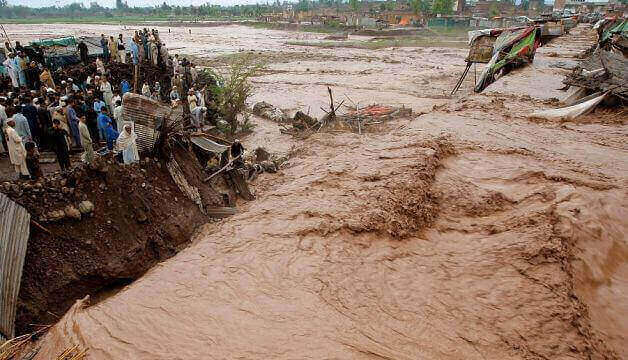Last Updated on: 29th June 2023, 07:40 am
Pakistan Suffers From Ongoing $10 Billion Floods in Country
This year’s devastating monsoon floods devastated the world’s fifth most populous nation, with an economic impact of more than $10 billion.
Finance Minister Miftah Ismail told the national daily that these preliminary estimates could change after on-the-spot surveys are conducted. Miftah said she currently has no details on the losses suffered by each sector of the economy.
He added that the government has yet to reassure investors about the initial assessment of the damage caused by what has been described as a humanitarian catastrophe of epic proportions.
The natural disaster comes as Pakistan is trying to end a dollar drought while facing one of the continent’s highest rates of inflation. The financially strapped South Asian country has already asked for help from international donors to deal with the storm, and the International Monetary Fund (IMF) is meeting later today to announce the country’s long-awaited $6 billion bailout to continue.
It should be noted that Pakistan’s agriculture accounts for about a quarter of the economy and unfortunately the turbulent floods have damaged or flooded millions of hectares of farmland, including some of the prized cotton crops. So far, the provinces of Sindh, Punjab, and Balochistan have borne the brunt of the damage.
According to the State Bank of Pakistan (SBP), heavy rains could adversely affect agricultural production. The regulator has already forecast that economic growth will fall from 6% last year to 3-4% in the current fiscal year.
Research suggests that this year’s rainfall was 600% above average in some areas. Rainfall in Pakistan this season has exceeded levels recorded during the devastating flash floods of 2010, which brought in $4.5 billion in aid from the IMF, United Nations, World Bank, and Asian Development Bank.
After the natural disaster, Pakistan levied a 15% surcharge on all revenues to fund additional costs related to relief, recovery, and possible subsidies for affected industries.
After the 2005 earthquake and 2010 floods, Pakistan and its donors assessed the losses of various sectors of the economy. In the next phase, donors helped with proper relief and rehabilitation after the reconstruction phase. This time around, analysts expect the same strategy to be used again.
According to initial reports, more than 1,000 people and millions of livestock have died across the country and an unknown number of homes, hotels, and roads have been destroyed in the main flooded areas of Punjab, Sindh, Baluchistan, and Khyber Pakhtunkhwa (KP).
Overall, cumulative casualties between June 14 and August 28 totaled 2,636, including 1,061 fatalities. Sindh remains the hardest-hit province with 349 deaths, followed by Balochistan and KP with 242 deaths each.



